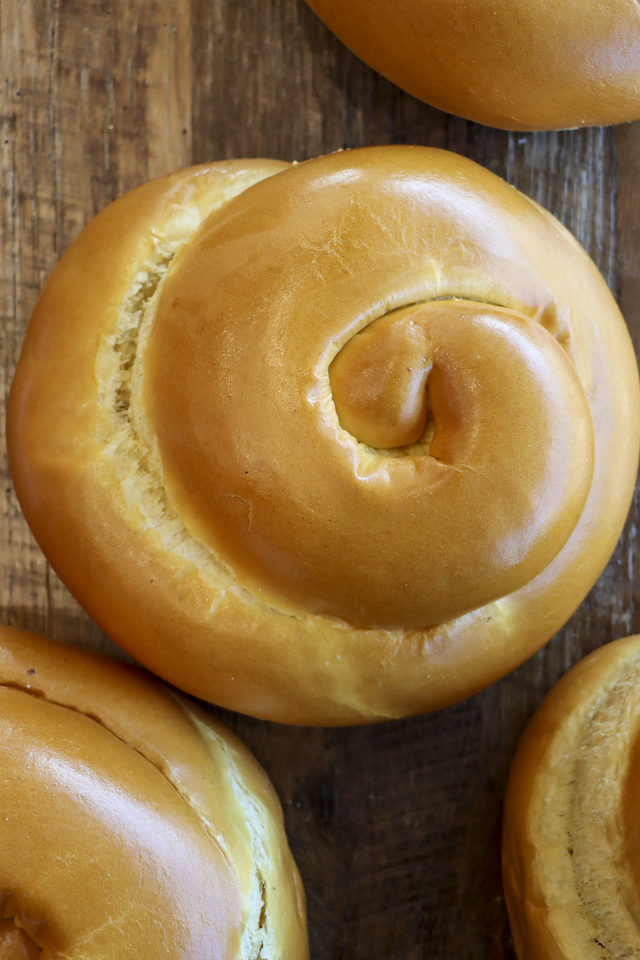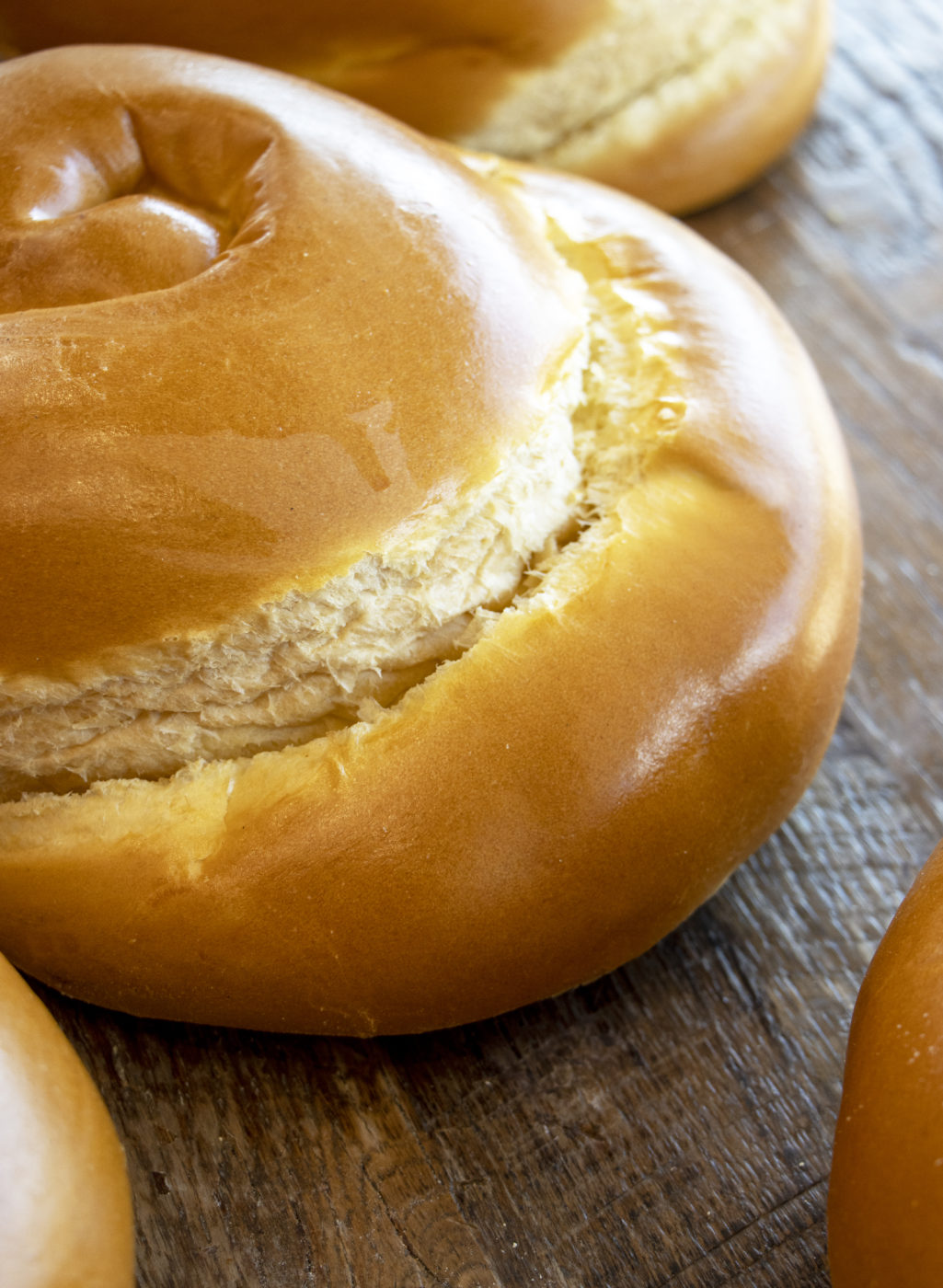While we have a wide variety of baked goods here at Three Brothers, we tend to focus on providing Jewish treats to our community. One such treat which gets a lot of questions and interest is our challah (can be pronounced like “holla”). If you’re at all curious about this Jewish staple, this blog post is for you.
What is Challah?
Challah is a slightly sweet, eggy bread with a consistency and taste similar to brioche. According to Jewish tradition, challah refers to a section of dough which is separated after kneading to be given as an offering at the Temple. Given that we live in the age of the diaspora, this tradition is no longer maintained, and the meaning of the word “challah” has evolved to refer to the loaves of bread traditionally baked for Shabbat. Interestingly, the dual Shabbat loaves are themselves a reference to biblical manna, a substance which fell from the sky for wandering Israelites to make bread from. On Fridays, with Shabbat incoming, enough manna would fall from the sky for each household to make twice the loaves they normally would so that they would not have to bake on the Sabbath.
Challah as we know it now is largely an Ashkenazi tradition, with many Jewish communities around the world simply using whatever local bread is available for the Shabbat meals. This is further evidenced by the fact that many eastern European nations (like Poland) consume breads very similar to challah in name and composition. Here at Three Brothers, we make challah in a traditional way, using eggs, flour, water, yeast, sugar, and salt. Sometimes we add toppings like raisins, poppy seeds, or sesame seeds for extra flavor and texture.

Why is Challah?
Challah bread can come in any shape or size you need, but traditionally it is either braided or made round, in the case of the high holy days. As we explained in our blog post on Rosh Hashanah, the round shape of the challah is meant to symbolize the cyclical nature of time in the new year. There are many possible reasons for the awfully specific braided shape of challah, but we won’t cover all of them here. One possible reason is that two loaves are made from six strands of dough each, altogether counting twelve breads which is meant to represent the twelve loaves which would have been served at the Temple in the days before the diaspora. If you would like to read a bit more as to why challah is braided, we recommend reading this article from Chabad: https://www.chabad.org/library/article_cdo/aid/480266/jewish/Why-Is-Challah-Braided.htm. Essentially, braided challah is a tradition, so we keep making it that way to keep the tradition alive. The shape of braided bread is unique, and makes serving challah a communal experience as it is meant to be pulled apart in chunks.

Written by Jaece Rogers
